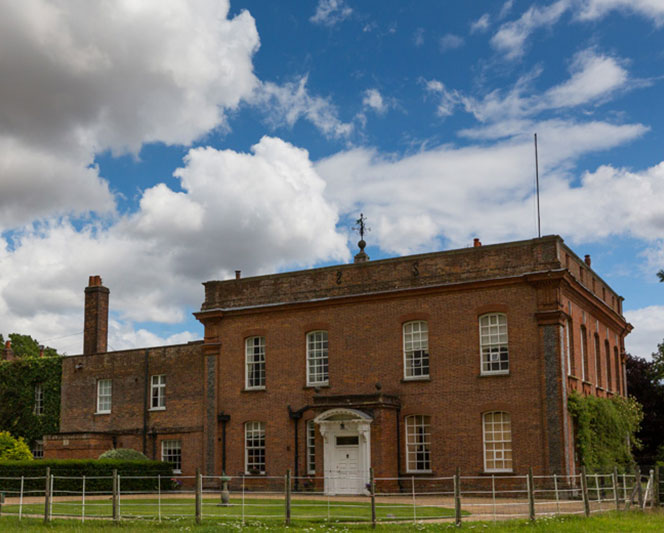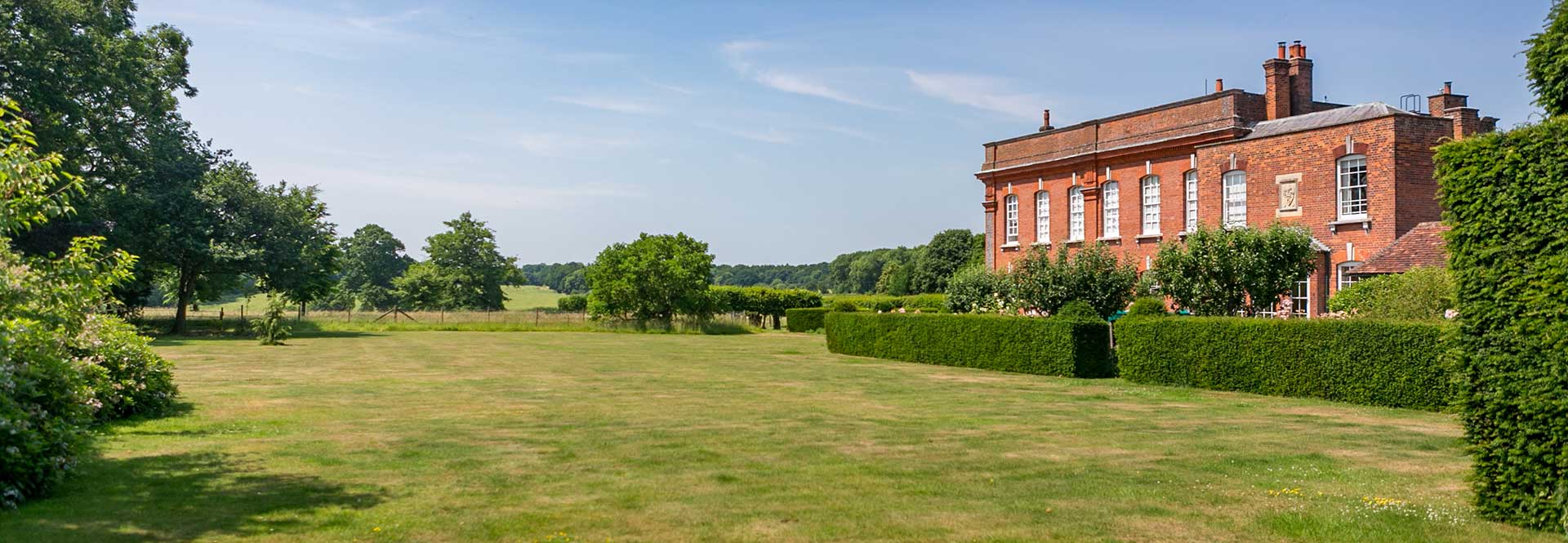Farming
The March rain continued, making it one of the wettest on record, and early April wasn’t much better! This put a stop to most field work on the farm, although we did manage to get some fertiliser on the winter crops in the very short windows that the weather allowed. By and large these continue look well, and are growing fast now that there is some warmth in the sunshine.
Last month I wrote about the weeding of our organic crops and our Wildfarmed wheat. We have been through all of these for a second time, and by and large have done a reasonable job, though we will only really know in late May, when what weeds remain start to poke out of the top of the crop. That is probably the last of the weeding that we will do in the winter crops are they are now at a stage where we risk damaging them, and those weeds that remain are generally too big and won’t be taken out by the machine. The crops themselves avoided the “steel worm” and didn’t seem in the least bit bothered by the process, though sadly the same can also be said of some of the larger weeds!
Our first organic crop is also really showing up the variations in inherent fertility in some of the fields. Long Meadow, the field running down towards the Golden Parsonage from the Home Farm, is our most fertile field, and the organic wheat there looks as well fed as any of our conventional wheats which have received artificial fertiliser. The fact that it is next to the farm, and therefore closest to the dairy cows when we still milked, is not a co-incidence, and this field received good quantities of organic manure for generations. It just shows the vital role that livestock play in growing crops organically. Great Almonds, in contrast, is now looking hungry, a fact amply demonstrated by a covering of small dark green patches, each one of which is on the site of a sheep’s dropping when it was grazed for a few weeks in the early spring. The majority of field didn’t receive droppings, and as a result the plants are beginning to struggle for nitrogen.
Readers may remember the linseed conundrum from last month. The weather meant that the decision was delayed, as there was no way that the crop could be planted at the beginning of April, as would typically be the case. As I write, we have just taken the decision not to plant it. Despite having sold some of it forward for a price well above the current market, the maths overall is simply not there and we could expect a substantial loss, once all the costs of growing and harvesting were taken into account. It would also most likely have meant a late harvest, putting pressure on the planting of the following winter wheat crop.
The plan is to plant a summer cover crop with a variety of species which will be great for pollinators and will offer soil conditioning and fertility. The range of species is likely to include phacelia, buckwheat, berseem clover, reed millet, white mustard and linseed. Some readers may remember a few years ago when we had a similar mix growing in the fields opposite the garden centre, and it was alive with bees, who seem to love the phacelia flowers above all else. This will be planted in mid to late May, assuming there is sufficient moisture in the soil, allowing the plants to develop flowers, but not to early that they all set seed and we have to terminate them before they have done maximum benefit to the soil.
The oilseed rape along Gaddesden Row is now starting to flower, and this will continue for the next few weeks. Apart from some pigeon damage in a few areas ( as usual all the quiet corners next to woods), the crop generally looks well.
Bird Surveys
I mentioned last month that the Chilterns Conservation Board had carried out a bird survey across the farm over a couple of days in late February. We are waiting for a complete breakdown of the data, but the headline numbers are encouraging, with 62 species being seen, of which 33 were species of conservation concern. Only yesterday I saw a pair of lapwings on a field called Binghams Bottom, which is great news. If the plan for the summer cover crop materialises, this should encourage many more of these delightful birds to nest here. The last time we had a similar cropping situation on the same fields, I counted twenty eight in one flock, so we’ll keep our fingers crossed that the same happens again.
Estate Work
The usual rounds of winter and early spring work have continued whilst farm work has been on hold, mainly with repairs to gutters, tracks and rooves. The last few days of nice weather have also allowed us to harrow and roll various horse paddocks to encourage grass growth, although some, particularly those around Marsh Farm are still too wet for this.
The March rain continued, making it one of the wettest on record, and early April wasn’t much better! This put a stop to most field work on the farm, although we did manage to get some fertiliser on the winter crops in the very short windows that the weather allowed. By and large these continue look well, and are growing fast now that there is some warmth in the sunshine.
Last month I wrote about the weeding of our organic crops and our Wildfarmed wheat. We have been through all of these for a second time, and by and large have done a reasonable job, though we will only really know in late May, when what weeds remain start to poke out of the top of the crop. That is probably the last of the weeding that we will do in the winter crops are they are now at a stage where we risk damaging them, and those weeds that remain are generally too big and won’t be taken out by the machine. The crops themselves avoided the “steel worm” and didn’t seem in the least bit bothered by the process, though sadly the same can also be said of some of the larger weeds!
Our first organic crop is also really showing up the variations in inherent fertility in some of the fields. Long Meadow, the field running down towards the Golden Parsonage from the Home Farm, is our most fertile field, and the organic wheat there looks as well fed as any of our conventional wheats which have received artificial fertiliser. The fact that it is next to the farm, and therefore closest to the dairy cows when we still milked, is not a co-incidence, and this field received good quantities of organic manure for generations. It just shows the vital role that livestock play in growing crops organically. Great Almonds, in contrast, is now looking hungry, a fact amply demonstrated by a covering of small dark green patches, each one of which is on the site of a sheep’s dropping when it was grazed for a few weeks in the early spring. The majority of field didn’t receive droppings, and as a result the plants are beginning to struggle for nitrogen.
Readers may remember the linseed conundrum from last month. The weather meant that the decision was delayed, as there was no way that the crop could be planted at the beginning of April, as would typically be the case. As I write, we have just taken the decision not to plant it. Despite having sold some of it forward for a price well above the current market, the maths overall is simply not there and we could expect a substantial loss, once all the costs of growing and harvesting were taken into account. It would also most likely have meant a late harvest, putting pressure on the planting of the following winter wheat crop.
The plan is to plant a summer cover crop with a variety of species which will be great for pollinators and will offer soil conditioning and fertility. The range of species is likely to include phacelia, buckwheat, berseem clover, reed millet, white mustard and linseed. Some readers may remember a few years ago when we had a similar mix growing in the fields opposite the garden centre, and it was alive with bees, who seem to love the phacelia flowers above all else. This will be planted in mid to late May, assuming there is sufficient moisture in the soil, allowing the plants to develop flowers, but not to early that they all set seed and we have to terminate them before they have done maximum benefit to the soil.
The oilseed rape along Gaddesden Row is now starting to flower, and this will continue for the next few weeks. Apart from some pigeon damage in a few areas ( as usual all the quiet corners next to woods), the crop generally looks well.
Bird Surveys
I mentioned last month that the Chilterns Conservation Board had carried out a bird survey across the farm over a couple of days in late February. We are waiting for a complete breakdown of the data, but the headline numbers are encouraging, with 62 species being seen, of which 33 were species of conservation concern. Only yesterday I saw a pair of lapwings on a field called Binghams Bottom, which is great news. If the plan for the summer cover crop materialises, this should encourage many more of these delightful birds to nest here. The last time we had a similar cropping situation on the same fields, I counted twenty eight in one flock, so we’ll keep our fingers crossed that the same happens again.
Estate Work
The usual rounds of winter and early spring work have continued whilst farm work has been on hold, mainly with repairs to gutters, tracks and rooves. The last few days of nice weather have also allowed us to harrow and roll various horse paddocks to encourage grass growth, although some, particularly those around Marsh Farm are still too wet for this.


